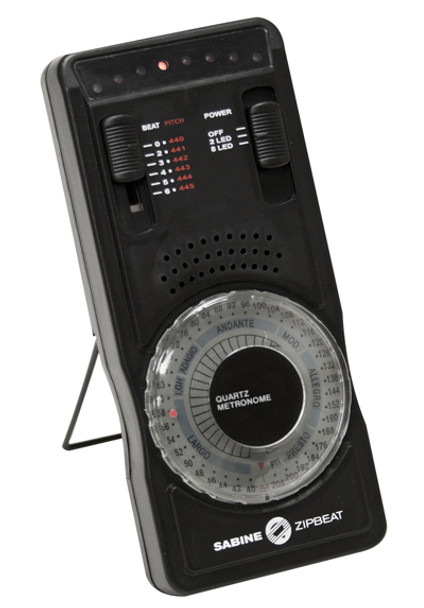Auditory Rhythmic Stimulation with a Metronome
 Auditory Rhythmic Stimulation is one of the more current treatment methods for gait training. This treatment is also know as auditory rhythmic signaling, and acoustic rhythmic cueing. Using this treatment method involves acoustic rhythms produced by metronomes or music that gives the cadence during walking so patients can synchronize their footsteps with the rhythm that is heard.
Auditory Rhythmic Stimulation is one of the more current treatment methods for gait training. This treatment is also know as auditory rhythmic signaling, and acoustic rhythmic cueing. Using this treatment method involves acoustic rhythms produced by metronomes or music that gives the cadence during walking so patients can synchronize their footsteps with the rhythm that is heard.
The gait in patients, as a result of this treatment, increases step length, cadence, and symmetry. It also improves the functional walking ability by increasing gait speed which as a result increases walking speed and stride length.
Effectiveness Variables
It's important to note that this treatment relates with how well the gait is linked to the acoustic rhythm and the speed of the metronome. When these are linked the outcome is more positive with this particular treatment method.
Auditory-Motor Coordination
For the physical therapy, it is important to understand a patient's auditory-motor coordination. This is defined as the way the gait adjusts to the acoustic stimulation of music or a metronome. Knowing this, a physical therapist can modify the metronome to achieve the most best coupling between gait and rhythm. In essence, a patients auditory-motor coordination is better if the stimulus (metronome) is close to the patient's preferred rate, therefor the efficiency of the acoustic rhythms is symmetry, fluidity, and gait adaptability will be better.
Once the auditory-motor coordination is understood by the physical therapist, there are generally three different stimulus frequencies that are used for auditory cueing - which are, 90%, 100%, and 110% of the patient's cadence.
As a starting point to determine auditory-motor coordination and the metronome's stimulus frequency you can do the following:
- Have the patient walk barefoot 10 meters three times at his or her preferred speed and count the number of steps taken.
- Calculated the cadence in the unit of step/minute.
- Adjust the rhythm of the metronome to the patience cadence.
- Ask the patient to match his or her footsteps to the auditory rhythmic stimulus from the metronome.
- When synchronization happens, the physical therapist can make the necessary adjustments to the frequency of the metronome at 90%, 100%, and 110% of the patents cadence.
For further and more detailed information on auditory rhythmic stimulation you can visit the following article Auditory Rhythmic Stimulation for Gait Training on Physiopedia's website.
On Rehab Therapy Supplies's website we offer metronomes that aid physical therapists in their efforts to improve gait.
Recent Posts
-
Acupuncture vs. Dry Needling: What’s the Difference?
At first glance, acupuncture and dry needling might seem identical. Both involve inserting thin need …Jun 11th 2025 -
What Is Dry Needling? A Modern Approach to Pain Relief and Muscle Recovery
Chronic muscle pain, tension, and restricted movement can significantly impact your daily life, sign …Jun 11th 2025 -
The Kinetic Chain and Its Importance?
The kinetic chain is a key principle in physical therapy, referring to the way muscles, joints, and …Apr 18th 2025



